Previous Best Human Rights Books lists: July-September, April-June, January-March, 2017, 2016, 2015
The 14 books are set in Argentina, China, Guatemala, India, Israel, Mexico, Niger, Northern Ireland, Palestine (3), Russia, South Sudan, the United States (4), and globally.
They deal with the following human rights issues: activism and nonviolent struggle, arbitrary detention, censorship and propaganda, children’s rights, rights of civilians in conflict, corruption, democracy and dictatorship, right to education, enforced disappearance, equality, extrajudicial killings, genocide, human rights defenders, indigenous peoples’ rights, labour rights, land rights, the right to life, nonviolent protest, prisoners’ rights, racism and discrimination, the right of self-determination, sexual violence and harassment, slavery, torture, war crimes, and women’s rights.
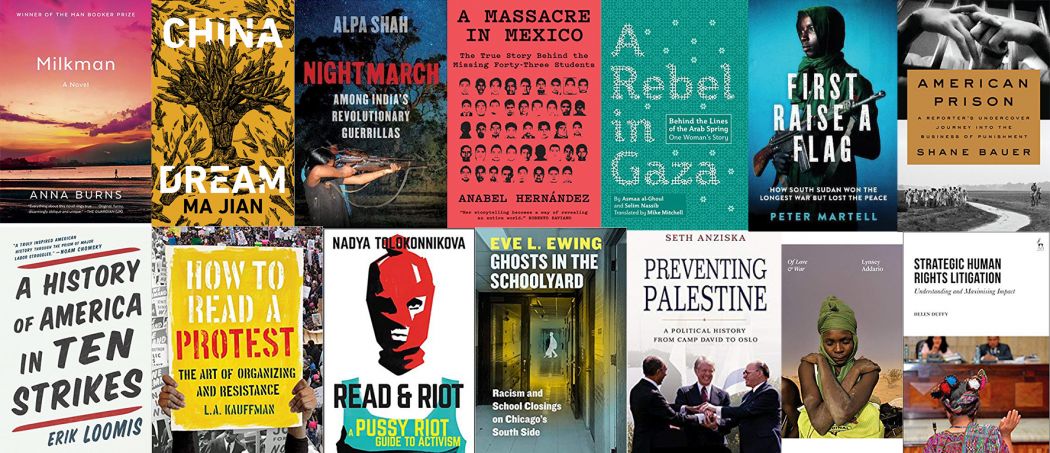
Below the list of 14 books, there are five other notable books that I have not had the chance to read but, if I had, would probably have made the best-of list.
Most of the books were published in the fourth quarter of 2018, from October through December, with the exception of five . Publication dates other than those within the October-through-December period are noted below.
All book titles below are linked to the Book Depository’s website. Buy a book through a link and five percent of the order will go to the non-profit Hong Kong Free Press which publishes high-quality, fully independent journalism on Hong Kong and China, a very worthy cause.
The list
Milkman, Anna Burns (Faber & Faber)
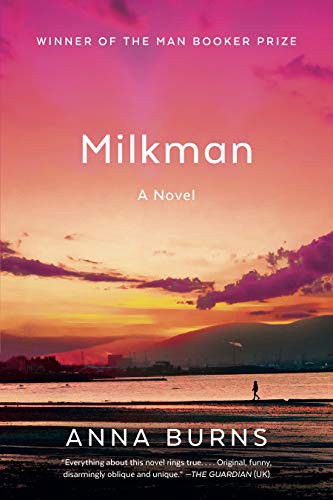
The language of this book insinuated itself into me. It is not an easy, or “entertaining” or page-turning read, but rewards patience as a penetratingly insightful examination of the various ways violence, visible and invisible, physical and psychological, obvious and otherwise, is visited upon people.
It’s about a dysfunctional, violent community as told from the perspective of one of its most powerless, vulnerable members, an 18-year-old woman who is being stalked by a paramilitary leader regarded by many in the community as a hero.
This “Milkman” is not a milkman. The narrator’s gossiped about, completely falsely, as having taken up with him as a mistress. The narrator knows she’s lowest on the totem pole and acts accordingly, in preventive self-defence, by trying to make herself as invisible as possible and steer clear of trouble.
But even small things, like the fact that she likes to read while walking, make others suspicious of her, and she is at risk of becoming one of the “beyond-the-pales”.
The narrator describes the community as “our intricately coiled, overly secretive, hyper-gossipy, puritanical yet indecent, totalitarian district”. The community is not named, nor is the city it is in, nor the “state-renouncing paramilitary”, the “state-supporting paramilitary”, nor the state, nor, for that matter, any of the characters.
But it’s clear that in broad outline, it is the Catholic community of Belfast during the Troubles in the 70s. The author says, “Although it is recognisable as this skewed form of Belfast, it’s not really Belfast in the 70s. I would like to think it could be seen as any sort of totalitarian, closed society existing in similarly oppressive conditions… I see it as a fiction about an entire society living under extreme pressure, with long term violence seen as the norm… about how power is used, both in a personal and in a societal sense”.
The book is about the multiple injustices, big and small, that a community visits upon itself and how members of the community perpetuate and are complicit in those injustices even as they may chafe against many of them.
Incidents of violence are scattered like debris throughout the story: the head of Somebody McSomebody’s brother is blown off in the middle of his street and never found in spite of an extensive search; the state soldiers massacre all of the dogs in the district one night so as to prevent them from warning people of the soldiers’ approach (and also to assert their power); a cat’s head is discovered, having been blown off by unexploded ordinance dropped by the Germans in World War II; and women are always the ones who are at the bottom of the heap, as well as the ones often responsible for enforcing the unjust prevailing order.
“The truth was dawning on me of how terrifying it was not to be numb, but to be aware, to have facts, retain facts, be present, be adult.”
China Dream, Ma Jian (Chatto & Windus)

Times like these need truth-tellers like Ma Jian: “The China Dream is another beautiful lie concocted by the state to remove dark memories from Chinese brains and replace them with happy thoughts. Decades of indoctrination, propaganda, violence and untruths have left the Chinese people so numb and confused, they have lost the ability to tell fact from fiction.”
These words are in the prologue. What follows is a story that speaks just as clearly: A corrupt official is in charge of the China Dream Bureau. He is a fervent believer in Xi Jinping’s China Dream and hopes to develop a way of instilling it directly into people’s brains.
But he is increasingly plagued with memories and nightmares from the Cultural Revolution, when he was a Red Guard who was partly responsible for his own parents’ deaths.
Inspired by Orwell’s 1984, China Dream is about the relationship between historical past and present. Can the Communist Party really “cancel” its gruesome past, forcing the Chinese people to forget it through propaganda and censorship?
Unsurprisingly, the novel suggests that while on the surface the Party may appear to be strikingly successful, it’s not that easy: the past is present in the present, in the form of nightmares, and impressed deep within people’s being, whether consciously or unconsciously, in the form of deep-set patterns of deceit, including self-deceit, of violence, and of corruption.
The violence of today blossoms out of the unresolved violence of yesterday. Xi Jinping’s China Dream, from this perspective, is quite similar to the Cultural Revolution. It isn’t as obviously violent or chaotic, but it reproduces features such as forcing people to choose sides, hounding those who don’t or who choose the wrong side, and giving cover to oppression of the powerless by the powerful.
It imposes a forced and artificial national “Chinese” identity, obscuring the many differences and conflicts within Chinese society. China Dream suggests that, ultimately, Xi’s Dream is just the latest symptom of a deep mental illness that has been plaguing the Chinese people for decades.
Ma Jian could find no publisher in Hong Kong for the Chinese original. When he came to the Hong Kong International Literary Festival, two venues successively prevented him from speaking, in spite of prior agreement with the festival; ultimately, the first relented. Who knew literature could be so dangerous?
Nightmarch: Among India’s Revolutionary Guerrillas, Alpa Shah (Hurst) published in August
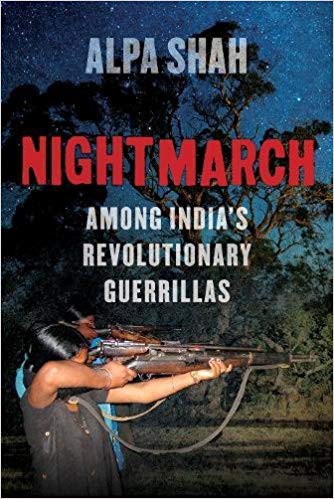
Shah is a UK anthropologist. Two decades ago, she began studying and living with Adivasi communities in India. Since the Maoist/Naxalite rebels’ strongholds correspond to Adivasi areas, her research eventually brought her into contact with the rebels.
This book is a study of both the rebels and the Adivasi groups who provide most of their foot soldiers. It is structured around a “nightmarch” that Shah went on with a group of rebels in 2010 lasting seven nights and 250 kilometers.
Shah profiles a number of figures in detail: Prashant, the kind-hearted, generous Adivasi foot soldier; Gyanji, the high-caste Indian who forsook his life of privilege to fight a guerrilla war and became a Naxalite leader; Vikas, the Adivasi Naxalite who goes bad, becoming corrupt; Kohli, the sixteen-year-old Adivasi Naxalite who acts as Shah’s assistant and bodyguard on the march; and Somwari, the Adivasi villager who shelters and takes care of the author and represents the strength and courage of Adivasi women.
This is by far the best book I’ve come across on the the Naxalite rebels and the Adivasi communities where they operate. It reminds of Sujatha Gidla’s excellent Ants among Elephants, not least because Gidla’s uncle became a revolutionary like Gyanji, disappearing into the forests for decades.
Shah portrays traditional Adivasi society as much more democratic and gender-equal than Indian caste society. From the Adivasi perspective, the struggle is not necessarily for the Marxist ideals the leaders of the Naxalites propound but simply to defend their own society, culture, and lives from the violent onslaught of a combination of the Indian state, caste society, and capitalisms.
In some ways, the Naxalite rebels might appear marginal to contemporary India, but in terms of these issues, their struggle, and the struggle of Adivasis to maintain control over their lives and future, are right at its heart.
A Massacre in Mexico: The True Story Behind the Missing Forty-Three Students, Anabel Hernández, translated from the Spanish by John Washington (Verso)
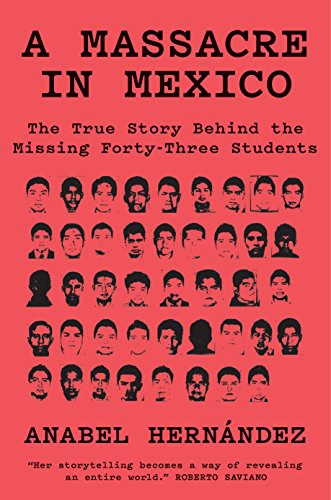
On September 26, 2014, a group of students from the Ayotzinapa Rural Teachers’ College were en route to a protest in Mexico City against the 1968 Tlatelolco massacre of students when intercepted by people who were most likely a combination of security forces and organised crime groups.
A confrontation ensued. Come the morning, the students were nowhere to be found. The crime that had transpired and the resultant cover-up brought the profound depths of corruption and illegality in the Mexican government and security forces— as well as the vulnerability of ordinary Mexicans — into stark relief.
The disappearance of the Ayotzinapa 43 and the government’s subsequent bungled cover-up have received much media attention and sparked huge protests, nearly bringing down the Nieto government and playing a key role in permanently damaging its popularity.
When Anabel Hernández got news of the enforced disappearances, she was living abroad, having fled into exile to escape death threats resulting from her investigation into aspects of Mexico’s long drug war, in which 200,000 have been killed and 30,000 disappeared in the last decade.
Even in that ocean of violence and death, the enforced disappearance of the 43 resonated throughout the country. Hernández felt compelled to return to Mexico to investigate the story herself. This book, the most complete telling of the story yet, is the result.
I found the backstory of the school the “normalistas” attended, Raul Isidro Burgos Normal School, and of the students themselves especially interesting.
Much of Hernández’s attention falls on the government’s botched investigation, which she believes was intended to protect powerful federal interests including the army and police.
Some may find she goes into too great detail for the average reader. but this book is intended as documentation, to lay bare the truth. Not only that, it is a portrait of contemporary Mexico, of its poverty, violence and discrimination directed against the poor, and in particular campesinos, of its torture and corruption.
One senses that at the heart of the story of the Ayotzinapa 43 and the recent election of leftist outsider Andrés Manuel López Obrador, there is a fight over the future of the country’s soul.
A Rebel in Gaza, Asmaa al-Ghoul and Selim Nassib, translated from the French by Mike Mitchell (DoppelHouse Press)
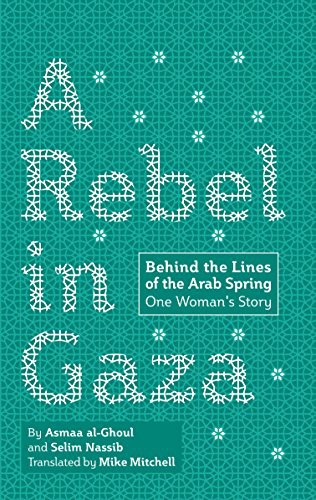
A sharp, pulsating memoir of life in Gaza by a native. Al-Ghoul attempts to “keep away from the prevailing clichés, from the ode to the liberation of the occupied land or the story of a young woman standing up to the government on her own.”
She describes the city of Gaza as “abuzz with such a profusion of love, happiness, death and oppression that it prevents you from seeing other places”. Life there “has a strength that makes you feel that death doesn’t exist, except in war.”
“The patter of the raindrops on the corrugated-iron roof, the tick-tock of the alarm clock, the soldiers bursting in — those three things are forever intermingled for me. My whole life was trapped within those moments of fear and sadness… When the first Intifada broke out, in 1987, I was only five, but I still have the smell of the teargas in my nostrils. Hamas was founded the same year; I grew up with it. It was a world that was both stable and sad. My uncles were members of Hamas, that’s why the Israelis would come bursting in on us in the middle of the night, terrorising me.”
Al-Ghoul is opposed to Israeli occupation, opposed to the oppression and misogyny of Hamas, opposed to the corruption of Fatah, opposed to any force that attempts to shackle the human spirit. She has a serial knack for antagonizing those in positions of authority.
If you have likewise felt as if surrounded by a world whose values you simply cannot accept, you will find a kindred spirit here. Reading her book made me feel a little less lonely.
The English version comes to us in a roundabout way, written in French by Selim Nassib as transcribed from al-Ghoul’s telling in Arabic, and translated by Mike Mitchell. A good review.
First Raise a Flag: How South Sudan won the longest war but lost the peace, Peter Martell (Hurst) published in September

Much of the first half of this book tells the history of South Sudan, a story of colonialism, under-development, forced isolation, and, eventually, once Sudan had gained independence, war between the government and South Sudanese rebels.
Much of this history is well known and can be found elsewhere, though Martell goes out of his way to track down people who played a part in it, like a former colonial administrator, now a retired man in his 90s in the UK, or a Swiss journalist duo who went to document the South Sudanese rebellion and ended up kidnapped by the rebel army they intended to cover.
For me, the book really becomes most interesting when it focuses on the lead-up to independence in 2011 and the aftermath, a history that has been conveyed in often confusing fragments by the media. Given that Martell was a BBC journalist who covered South Sudan for years, he is especially well placed to focus on this recent history.
I have lived in Uganda, worked with South Sudanese, and spent time in South Sudan, but still, the reporting over the past decade has been so sporadic that it is often hard to piece together just what has occurred.
The big question is, after having fought so long for independence, how could the South make such a mess of it, tumbling into brutal multi-front civil war?
Reading this book, I am reminded that, actually, the chances of success were much smaller than of catastrophe, given the fact that South Sudan is the poorest, least developed country in the world, with an illiteracy rate upwards of 80 percent, with virtually no functioning governmental institutions or infrastructure such as roads, schools, and hospitals, and recovering from decades of war in which millions died.
On top of that, The military men are in power, and to hold things together, they have taken the billions in aid and oil money that has flowed in and shared it with enemies whom they need as allies. A huge amount of the abundant revenues has simply been siphoned off.
Even all that may not have been enough to doom the new state, but also, these military men decided their slice of the pie wasn’t big enough and ended up pulling the country down into an abyss of civil war.
Once order broke down, there was more logic to attacking than to waiting to defend, and after decades of war, plenty of weapons to do it with. It is hard to see the exit. Indeed, Martell sees few rays of hope; whenever he encounters one, it’s in striking contrast with the rest of the story.
Ordinary South Sudanese are depicted as decent, resilient people who desperately want peace and a chance for a stable life. This was always my impression as well.
Yet it would be hard to find a more hopeless place in the world — as Martell puts it, “more ruined, more divided, more destroyed and far more desperate than ever before”. UN rights experts have submitted to the Security Council a list of 41 top commanders and politicians for potential prosecution for war crimes and crimes against humanity.
American Prison: A Reporter’s Undercover Journey into the Business of Punishment, Shane Bauer (Penguin) published in September
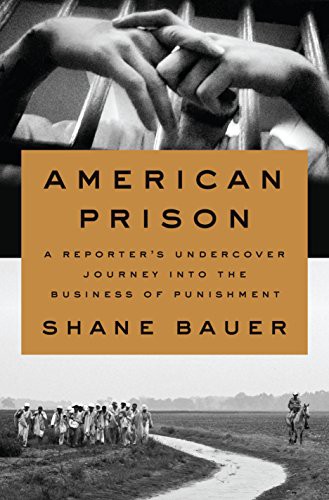
If I had been imprisoned in Iran, I think the last thing I would ever want to do would be to go anywhere near a prison again, and yet that is exactly what Shane Bauer does in American Prison, reporting undercover as a guard inside a private prison in Lousiana.
He worked there for four months in 2014. What he found is, for anyone who’s been following the issue of mass incarceration in the US and the terrible conditions in US prisons, fairly predictable.
Still, it’s the fine grain of his report that accounts for the power of his story, full as it is of many anecdotes about the lives of both prisoners and guards. Chapters about his experience as a guard are interspersed with historical chapters about how the US penitentiary system came about and the long terrible tradition of using prisoners for profit.
Also he tells how the recent private prison industry grew up, a development that’s taken place just over the last thirty years, unsurprisingly tracking the rapid increase in the number of people imprisoned over the same period.
Obama tried to halt federal contracts with private prisons, but Trump immediately overturned that decision upon coming to power. Some of the stories told in Bauer’s account are, in their very mundanity, stupifyingly horrible: prisoner Robert Scott eventually had his legs and fingers amputated because he got gangrene. He had repeatedly sought medical help and was repeatedly denied it until it was too late to save his limbs.
This is the story of a society that has never managed to treat all of its people with humanity and that has a history of treating prisoners especially badly, both out of racism and for profit. The core of American Prison is based on a long report in Mother Jones that made my 2016 Best Human Rights Journalism list.
A History of America in Ten Strikes, Eric Loomis (The New Press)
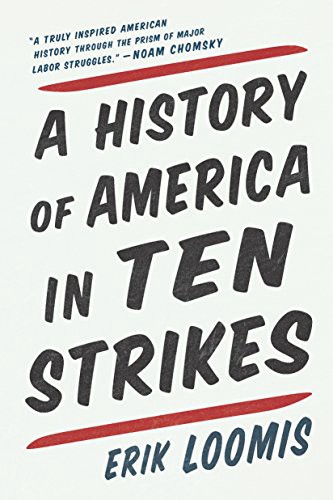
This book reminds a bit of Howard Zinn’s classic People’s History of the United States: It “flips” history and tells it from the underside, from the point of view of ordinary people.
But whereas Zinn’s books embraces the wide expanse of US history, this focuses on workers.
A very much needed book: I have often been struck by how selective in remembering their history Americans are, and perhaps no more so than when it comes to labour rights. Otherwise, how could ordinary blue-collar and middle-class workers vote for a billionaire who’s never shown anything but disdain for the common wo/man?
The last president who did a lot for labour rights in the US, Franklin Delano Roosevelt, was also immensely wealthy, but he really did have the interests of ordinary people at heart and showed it through a raft of legislation and initiatives now commonly known as the New Dealy
The recent story of American workers’ rights has largely been one of them being whittled away, especially from the 1970s and 80s onward. We live in that degraded era. How, I’ve often wondered to myself, do workers put up with this? Why don’t they organise?
Loomis thinks it’s partly to do with the terrific political backlash against labour organising throughout most of US history. And indeed what emerges from the book is a stunning picture of just how violently repressive employers have been, more often than not with the complicity if not outright support of the government.
Its clear lesson is that workers will only obtain their full rights and decent pay and working conditions if they organise, and they are supported by sympathetic public officials elected by the workers.
The book is cleverly structured around ten key strikes covering most of US history: the Lowell Mill Girls Strike (Massachusetts, 1830–40); Slaves on Strike (The Confederacy, 1861–65); The Eight-Hour Day Strikes (Chicago, 1886); The Anthracite Strike (Pennsylvania, 1902); The Bread and Roses Strike (Massachusetts, 1912); The Flint Sit-Down Strike (Michigan, 1937); The Oakland General Strike (California, 1946); Lordstown (Ohio, 1972); Air Traffic Controllers (1981); and Justice for Janitors (Los Angeles, 1990). A good review.
How to Read a Protest: The Art of Organizing and Resistance, L.A. Kauffman (University of California Press)
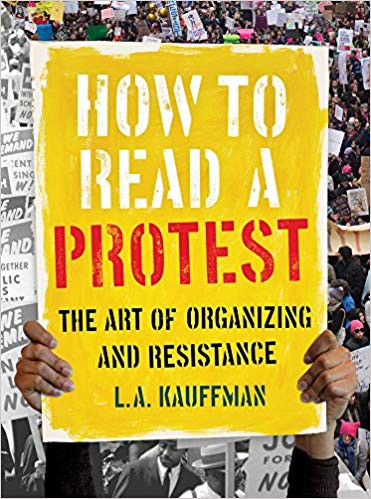
How to Read a Protest begins, “Protests work — just not, perhaps, the way you think.” There are few people better placed to explain that than Kauffman whose excellent Direct Action, a history of radical protest in the US going back to the early 1970s, was on last year’s Best Human Rights Books list.
The focus of this short book is a comparison between two iconic mass marches, the March on Washington of 1963, famous for Martin Luther King’s “I Have a Dream” speech, and the 2017 Women’s March.
These are commonly regarded as two of the most effective mass marches in modern US history, but as Kauffman stresses, they were very different in nature. The former was top-down, organized in almost military fashion, among other reasons to counter the perception, propagated in many newspapers at the time, that “Negroes” would riot.
The latter was bottom-up, grassroots, decentralized and, while focused on Washington, spread across over 600 cities and towns all over the country. The 1963 march was in many ways the culmination of a movement, and in 1964 and 1965 landmark civil rights legislation was passed, not as a direct result of the march, though it played some role.
The 2017 march sparked a movement that we are still seeing unfold. Kauffman puts the marches in context and discusses how street protests are part of wider movements. She also provides very helpful tables that provide a comparative overview of various mass marches over recent decades.
I would have liked the book to conclude with a chapter drawing lessons and conclusions from the comparison of the two marches in order to address the topic of the title more directly and generally. One lasting impression is just how much US society has changed since 1963. To me, the Women’s March was the beginning of a new country, diverse, egalitatarian, and proud of it, its Unity Principles reading like a manifesto for that country.
It remains to be seen if through people power the U.S. can realise the vision of the Women’s March.
Read & Riot: A Pussy Riot Guide to Activism, Nadya Tolokonnikova (HarperOne)
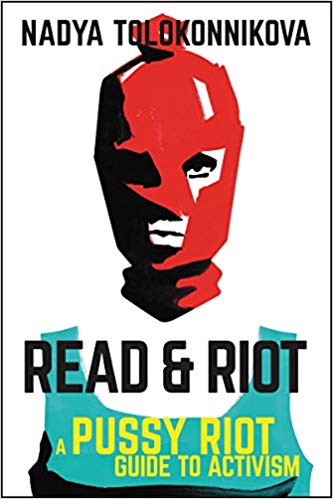
I read this while sitting through the Umbrella Movement 9 trial in Hong Kong, at moments in despair at the gross injustice of it all. The best compliment I can pay Tolokonnikova is that I found her book heartening.
I thought how different these defendants (academics, a priest, students, four political leaders, “pillars of society”) were from her brash, iconoclastic, almost compulsive rule-breaking, and yet their goal is the same, to fight for political and social justice.
This is a kind of universal spirit that must be cherished and cultivated. We must recognise one another, whatever superficial differences we have, and show solidarity. It also happened that I met two members of Pussy Riot while reading this book. They were visiting Hong Kong. We watched a movie together about the Umbrella Movement and they told me about running onto the World Cup Final pitch.
Read & Riot is both a guide to activism and a memoir. It is structured according to the guide concept, its chapters divided into ten “rules” of activism.
In terms of slogans to get her point across, these are effective, but I found her reflections on her own activities more interesting and nuanced. In particular, striking about both her and Maria Alyokhina (whose book, Riot Days, came out last year) is how inspired they are not just by political and activist heroes but by writers and artists too.
Activism in Russia today is bleak — how do you change a place where the tyrant rules at least to some extent by popular consent? — but activism most places most of the time about most things that matter is not easy, and the resilience, rebellious joy, perseverance and dedication that Tolokonnikova herself has and encourages in others are indispensable. If as an activist you’ve ever wondered if you are stupid or crazy doing what you do, this book is a definite shot in the arm.
Ghosts in the Schoolyard: Racism and School Closings on Chicago’s South Side, Eve L. Ewing (University of Chicago Press)
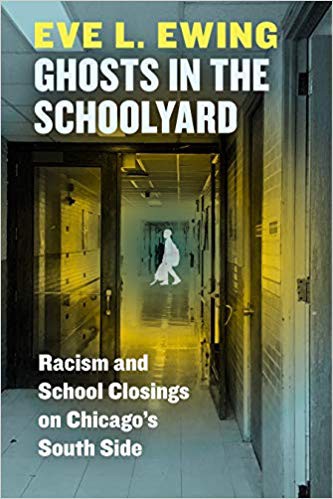
This book is about the attempts of the city of Chicago, under mayor Rahm Emanuel, to close dozens of schools, many in the majority-black South Side, and about the struggle of parents, teachers and students across the city to prevent the closings.
Affecting eventually 49 schools and nearly 12,000 mostly African-American students living in poverty, this turned out to be the largest mass school closure in US history. Facing a $1 billion deficit, the city believed the closings were necessary.
The city assured all concerned that better opportunities for academic success would result.
Ewing is both a sociologist and a South Side native, and as such, well placed to provide both overview and insight. The city argued the schools were failing and “under-resourced”. Ewing’s key question is: If that is so, why did people fight so hard to prevent their closure?
In answering that question, she opens a whole world. “The fight,” she says, “is actually about a great deal more than just one building.” This is an exploration of how racism works in the U.S. today: As Ewing emphasizes, it is structural and systematic, resulting in the “disenfranchisement of black people and harm to black children.”
Also enlightening are the profiles and interviews she provides of people fighting the school closures. What emerges is the immense gap between the way the authorities and the citizens saw their society. A recent report unsurprisingly showed that the school closures did not improve student performances.
Preventing Palestine: A Political History from Camp David to Oslo, Seth Anziska (Princeton University Press) published in September
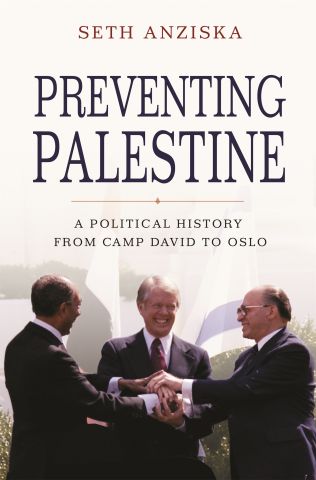
This book could be sub-titled, “the tragedy of the indefinite denial of self-determination”. Focused primarily on the high-level machinations of mostly Israeli and US politicians, it isn’t the sort of book I naturally enjoy, and “enjoyable” certainly isn’t the word to describe the sad story it tells.
The broad outlines of this story will be familiar to anyone who follows the Israeli oppression of Palestinians, and sometimes it may seem its primary audience is Americans who’ve been snowed by the Israeli and US propaganda about endless “peace processes” that go nowhere, which is exactly where Israel intended them to go.
Meanwhile further settlement and de facto annexation of the Occupied Territories continues, all under the guise of “searching for peace”.
Anziska calls this “a history of failure- a genealogy of a non-event”, though surely from the Israeli perspective, this failure has been a success. He meticulously documents how already in the 70s, Israeli planned to deny self-determination indefinitely while taking possession of land in the Occupied Territories.
In this history, rather than peace processes and agreements progressively leading to peace, we see the continual narrowing of the opportunity and scope for Palestinian self-determination, from Camp David to Oslo, with some windows of opportunity along the way that all eventually closed.
The current Israeli political culture is in some ways the most recalcitrant yet. As a Hong Kong self-determinationist, I identify strongly with the Palestinian sense of hopelessness and determination to persevere, not least of all because they have no other choice.
Of Love and War, Lynsey Addario (Penguin Press)

Amazingly, considering how prolific she has been as a photojournalist, this is Addario’s first photobook. She simply hadn’t believed her photos were good enough.
Judge for yourself. This is a follow-up to her memoir, It’s What I Do, which came out three years ago, and some of the over 200 photos here were published in smaller format there.
The book is divided into chapters by subject: Afghanistan, Iraq, women in the military, “women’s issues”, sub-Saharan Africa, Libya, and migrants.
Interspersed with the photos are journal entries and letters as well as essays by Dexter Filkins, Suzy Hansen, and Lydia Polgreen.
Strategic Human Rights Litigation: Understanding and Maximising Impact, Helen Duffy (Hart) published in September
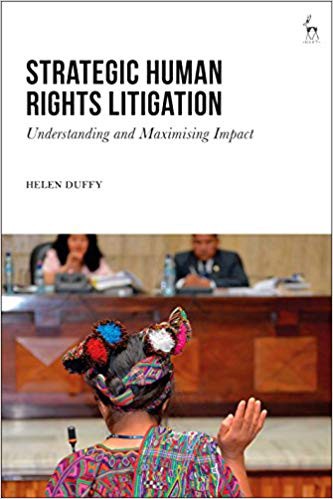
The term, strategic human rights litigation, refers to the pursuit of specific legal cases in courts with the intention of using them to advance a particular human rights cause.
This is, of course, a well-known practice that goes back decades and can be seen in the US civil rights movement and also in Israeli lawyers’ use of it to advance the cause of Palestinian rights, as depicted in Michael Sfard’s recent book, The Wall and the Gate.
The author, Helen Duffy, is both a professor and practitioner of SHRL. She runs Human Rights in Practice, an SHRL organization. This book is both a consolidation of her own experience and a review of the wider field.
It is intended primarily for a professional and academic audience but is also a good introduction to SHRL.
At the heart of the book are five case studies of litigation related to genocide in Guatemala, slavery in Niger, forced disappearance in Argentina, torture and detention in the “war on terror”, and Palestinian land rights.
These studies were chosen for their variety. The chapter on Niger focuses on the case of a former slave pursuing justice; the chapter on Argentina, on the decades-long efforts to hold members of the military dictatorship responsible for its crimes. There have now been 2,166 defendants, 622 convictions, and 57 acquittals. The scale is astounding, and there can be few other countries to have so seriously addressed crimes committed by previous regimes.
While Duffy mentions that SHRL can have negative consequences, none of the five case studies belong to that category, and it would have been interesting to hear more about that.
Other notable books
The five books below could have easily ended up on the list above if I had gotten around to reading them.
Gandhi: The Years that Changed the World, 1914–1948, Ramachandra Guha
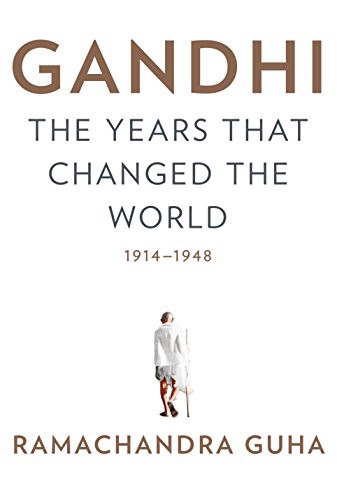
Who needs another book about Gandhi? There are a lot out there. This one is very well-written, highly readable, well-researched, and, at over 1,000 pages long, comprehensive. It has provoked differing reactions, ranging from the appreciative to the highly critical.
This review claims that Guha is trying to turn Gandhi into the liberal icon he never was in order to use that image of him as a weapon against the intolerance of the ruling BJP. I definitely get the point of the latter: Gandhi was a complex figure very much of his times.
The overall narrative departs remarkably little from Richard Attenborough’s great film, and in that sense one might argue there is little new here, except in the details. I enjoyed reading the first 10 percent of the book on my Kindle free sample.
What I appreciated most was the copious information about Gandhi’s relations with many other political figures as well as how their strategies and actions came about. In other words, from an activist’s point of view, it’s highly engrossing and rewarding.
Good and Mad: The Revolutionary Power of Women’s Anger, Rebecca Traister (Simon & Schuster) October 2
and
Rage Becomes Her: The Power of Women’s Anger, Soraya Chemaly (Atria Books) September 11
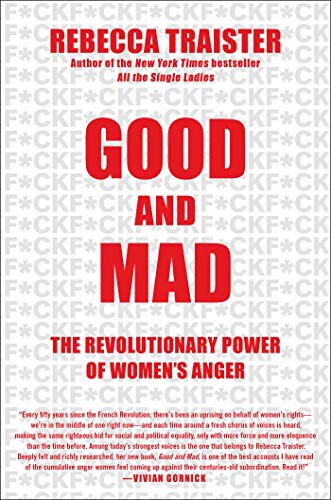
As someone who is not a woman and who is inspired by Buddhism, these two books challenge me. I generally do not regard anger or rage as positive, and I say that as an angry activist.
Sometimes it seems I spend an inordinate amount of energy dealing with my own anger so as to prevent it from becoming harmful to myself or others. As a Buddhist teacher once responded to a question of mine, anger has some legitimacy as an initial response to injustice and as a motivation to redress it.
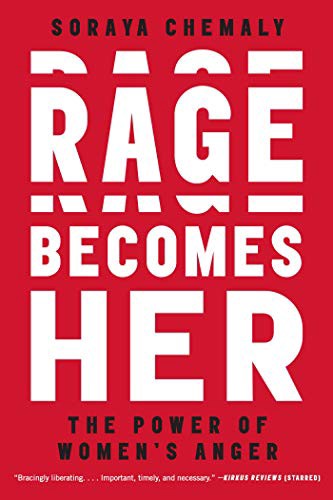
But I also think of the many on the far right who are enraged, and their rage takes the form of racism, sexism or xenophobia. I think of Pankaj Mishra’s documentation of that trend in Age of Anger.
Then again, I also think that if you have been told your whole life that you should not be angry, that you should repress or deny your anger, there is some justification in recognising it and expressing it.
That is certainly the case for many women. To me, one of the most admirable aspects of the 2017 Women’s March was the the transformation of anger into joy, power and the celebration of agency and diversity.
Both of these books examine women’s anger, its history, its psychology and its political implications.
I still have the image in my mind of Chemaly’s mother silently smashing plates. If it’s between that and channelling anger toward more productive ends, well…. A good review.
To the Promised Land: Martin Luther King and the Fight for Economic Justice, Michael K. Honey (W.W. Norton) published in April

King is a bit like Gandhi: How many books on him can there be? A lot, is the answer.
And recently, there have been several books that focus on the end of his life, when much of his attention turned towards issues besides those central to the Civil Rights Movement, such as the Vietnam War and economic justice.
It is the latter that is the focus here, and as many have argued, this is also where King becomes most radical in his full liberationist philosophy. Not only was he committed to racial equality but also to the poor and working class.
He called for nonviolent resistance to economic injustice, and at the time of his murder was supporting sanitation workers on strike in Memphis.
King’s whole agenda has not been entirely fulfilled in the US, but at least his struggle for racial equality has made great progress and received a lot of attention. Arguably, his advocacy of basic economic justice is as relevant today as ever.
Frederick Douglass: Prophet of Freedom, David W. Blight (Simon & Schuster) October 16

Frederick Douglass is often referred to as “the most important African-American of the nineteenth century”. He was an escaped slave, a great speaker and writer, and a leading abolitionist.
He turned away from the pacifist principles of leading abolitionists of his time, endorsing violent, armed rebellion and stating clearly, not least of all in the newspaper he started, that it was only through war that slavery could be ended.
In spite of this position, he was a frequent critic of Lincoln. He also criticised the premature end of Reconstruction after the Civil War.
This is the first full biography of Douglass in years. Much of what reviewers have pointed out as new, for example his intimate relations with women, is least interesting to me, and Douglass himself was a prolific self-biographer who wrote three autobiographies. What is most interesting to me is just how and in what ways he was a “Prophet of Freedom”. In many respects, he has become iconic of a certain kind of US freedom fighter.
